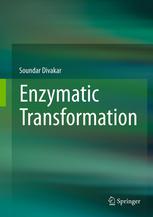

Most ebook files are in PDF format, so you can easily read them using various software such as Foxit Reader or directly on the Google Chrome browser.
Some ebook files are released by publishers in other formats such as .awz, .mobi, .epub, .fb2, etc. You may need to install specific software to read these formats on mobile/PC, such as Calibre.
Please read the tutorial at this link: https://ebookbell.com/faq
We offer FREE conversion to the popular formats you request; however, this may take some time. Therefore, right after payment, please email us, and we will try to provide the service as quickly as possible.
For some exceptional file formats or broken links (if any), please refrain from opening any disputes. Instead, email us first, and we will try to assist within a maximum of 6 hours.
EbookBell Team

0.0
0 reviewsTransformations using enzymes have been extensively investigated in the last two decades and the results promise great potential for this growing field, especially in the area of synthetic organic chemistry mainly due to of its many advantages. Accordingly, this book has attempted to bring out the advantages of using enzymes involving complex underivatized and unprotected substrates in non-polar media under homogenous and heterogeneous reaction conditions. Merits and demerits of using enzymes in terms of yields and selectivity/specificity are presented without any prejudice. Almost all the reactions dealt with are from the author’s laboratory comprising diverse substrates, and the catalysis involves two important hydrolyzing enzymes, extensively examined for the reverse reactions. Thus, esterification involving lipses and glycosylation involving glycosidases were investigated with respect to various strategies like optimization of reaction conditions, response surface methodology and kinetics, carrying out reactions under solvent, non-solvent and super critical carbon dioxide conditions. In short, the work presented is to ensure the comprehension of the problems faced by the researchers in this area so as to work out further efficient strategies for carrying out enzymatic transformations in the laboratory successfully with better yields and specificity.